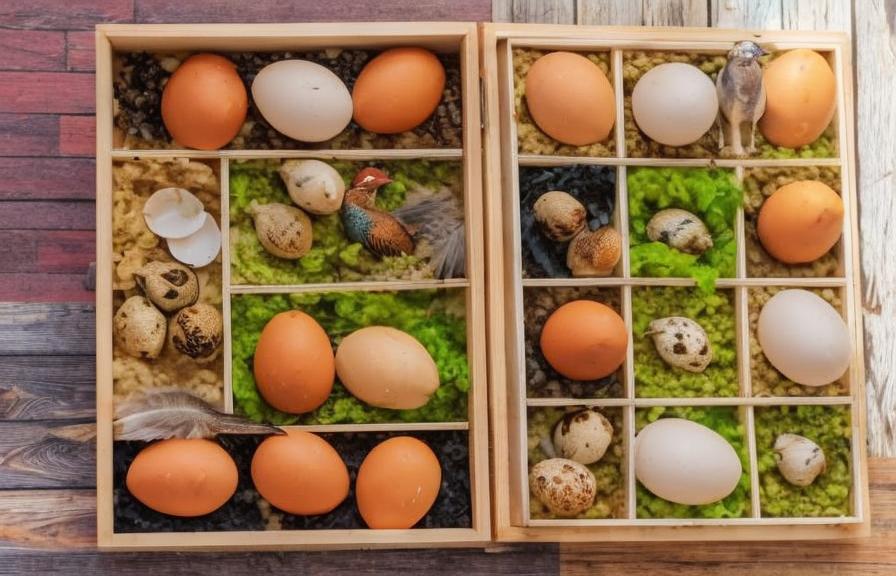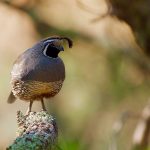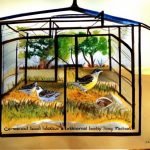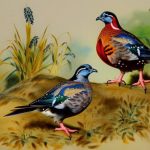Quail breeding has become increasingly popular in Australia due to the high demand for quail meat and eggs. There are several different quail breeds that are commonly raised in Australia, each with its own unique characteristics and traits. Quail farming is a lucrative business opportunity for many Australians, as quail are relatively easy to raise and require minimal space compared to other livestock. In this article, we will explore the common quail breeds in Australia, their characteristics and traits, breeding and raising practices, as well as the challenges and considerations for quail breeding in the country.
Key Takeaways
- There are several quail breeds in Australia that are popular for their meat and eggs.
- Common quail breeds in Australia include the Japanese quail, Coturnix quail, and Bobwhite quail.
- Different quail breeds have unique characteristics and traits, such as size, color, and egg production.
- Breeding and raising quail in Australia requires proper housing, feeding, and management for optimal production.
- Quail farming in Australia faces challenges such as disease management, market demand, and regulatory considerations, but has a promising future.
Common Quail Breeds in Australia
In Australia, there are several common quail breeds that are popular among breeders and farmers. The Japanese quail, also known as the Coturnix quail, is one of the most popular breeds due to its fast growth rate and high egg production. The Bobwhite quail, native to North America, has also gained popularity in Australia for its delicious meat and adaptability to various climates. The King quail, also known as the button quail, is another common breed that is often kept as a pet due to its small size and colorful plumage. These three breeds are the most commonly raised in Australia, but there are also other breeds such as the Gambel’s quail and California quail that can be found in the country.
Characteristics and Traits of Different Quail Breeds
Each quail breed has its own unique characteristics and traits that make them suitable for different purposes. The Japanese quail, for example, is known for its high egg production, with hens laying up to 300 eggs per year. They are also fast growers, reaching maturity in just 6-8 weeks, making them ideal for meat production as well. The Bobwhite quail, on the other hand, is prized for its flavorful meat and adaptability to various climates, making it a popular choice for both meat and egg production. The King quail, while not as prolific in egg production or meat yield, is often kept for its ornamental value due to its small size and colorful plumage. Understanding the characteristics and traits of each quail breed is essential for breeders and farmers to make informed decisions about which breed to raise based on their specific goals and resources.
Breeding and Raising Quail in Australia
Breeding and raising quail in Australia requires careful planning and management to ensure the health and productivity of the birds. Quails are relatively easy to breed, with hens laying eggs consistently throughout the year. However, proper housing, nutrition, and disease management are essential for successful breeding and raising. Quails can be housed in cages or aviaries, with each bird requiring only a small amount of space. They are omnivorous birds and require a diet high in protein, which can be provided through commercial feeds or a combination of grains, seeds, and insects. Disease management is also crucial, as quails are susceptible to various diseases such as coccidiosis and respiratory infections. Regular monitoring and proper hygiene practices are necessary to prevent outbreaks and ensure the health of the flock.
Quail Farming in Australia
Quail farming has become a profitable venture for many Australians due to the high demand for quail meat and eggs. Quails are relatively low maintenance compared to other livestock, making them an attractive option for small-scale farmers and backyard breeders. Quails can be raised in small spaces, making them suitable for urban farming as well. The meat and eggs of quails are considered delicacies in many cuisines, further driving the demand for quail products. Quail farming can be a sustainable and environmentally friendly business, as quails require less feed and space compared to other livestock such as chickens or pigs. With proper management and marketing strategies, quail farming can be a lucrative business opportunity for many Australians.
Challenges and Considerations for Quail Breeding in Australia

While quail breeding can be a profitable venture, there are several challenges and considerations that breeders and farmers need to be aware of. One of the main challenges is disease management, as quails are susceptible to various diseases that can quickly spread within the flock if not properly managed. Housing and space requirements are also important considerations, as overcrowding can lead to stress and aggression among the birds. Additionally, marketing quail products can be challenging, as they are not as widely consumed as chicken or duck products in Australia. Educating consumers about the benefits of quail meat and eggs, as well as creating unique value-added products, can help increase demand for quail products in the market. Overall, breeders and farmers need to carefully consider these challenges and develop effective strategies to ensure the success of their quail breeding operations.
Conclusion and Future of Quail Breeds in Australia
In conclusion, quail breeding in Australia offers a promising business opportunity for farmers and breeders due to the high demand for quail meat and eggs. Understanding the characteristics and traits of different quail breeds is essential for making informed decisions about which breed to raise based on specific goals and resources. Proper breeding and raising practices, disease management, and marketing strategies are crucial for the success of quail farming operations in Australia. While there are challenges and considerations to be aware of, the future of quail breeds in Australia looks promising as more consumers recognize the value of quail products in the market. With careful planning and management, quail breeding can be a sustainable and profitable venture for many Australians looking to diversify their farming operations.
If you’re interested in learning more about quail breeds in Australia, you might also want to check out this informative article on how to insulate a chicken coop on PoultryWizard. Proper insulation is crucial for maintaining the health and comfort of your poultry, including quails. This article provides valuable tips and insights on creating a suitable environment for your birds. (source)
FAQs
What are the different quail breeds in Australia?
In Australia, some of the popular quail breeds include the Japanese quail (Coturnix japonica), the Bobwhite quail (Colinus virginianus), and the King quail (Coturnix chinensis).
What are the characteristics of Japanese quail?
Japanese quail are small birds with a mottled brown and white plumage. They are known for their high egg production and are commonly raised for their eggs and meat.
What are the characteristics of Bobwhite quail?
Bobwhite quail are known for their distinctive call and are popular for hunting. They have a reddish-brown plumage with white stripes and are native to North America.
What are the characteristics of King quail?
King quail, also known as button quail, are small, ground-dwelling birds with a variety of color mutations. They are popular as pets and are known for their gentle nature.
Are there any other quail breeds commonly found in Australia?
In addition to the Japanese, Bobwhite, and King quail, other quail breeds that can be found in Australia include the California quail (Callipepla californica) and the Gambel’s quail (Callipepla gambelii).
Meet Walter, the feathered-friend fanatic of Florida! Nestled in the sunshine state, Walter struts through life with his feathered companions, clucking his way to happiness. With a coop that’s fancier than a five-star hotel, he’s the Don Juan of the chicken world. When he’s not teaching his hens to do the cha-cha, you’ll find him in a heated debate with his prized rooster, Sir Clucks-a-Lot. Walter’s poultry passion is no yolk; he’s the sunny-side-up guy you never knew you needed in your flock of friends!







